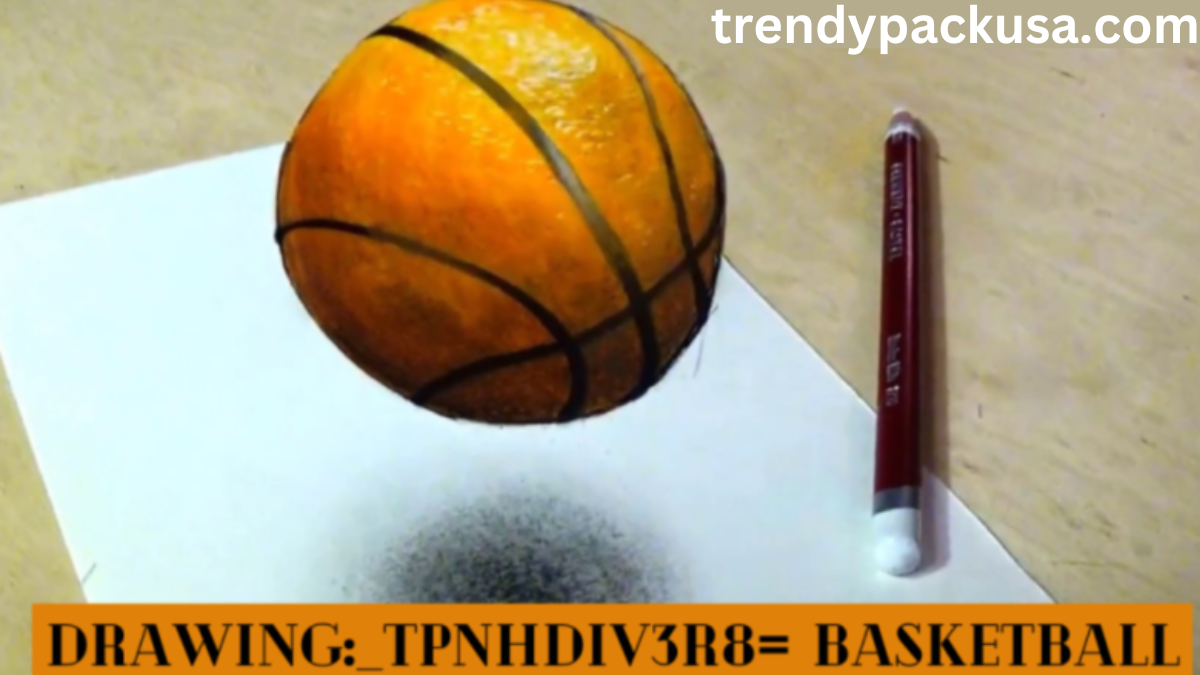Introduction to the Art of drawing:_tpnhdiv3r8= basketball
drawing:_tpnhdiv3r8= basketball Have you ever watched a basketball game and felt inspired not only by the player’s skills but also by the artistry of their movement? Imagine capturing that energy on paper, where every dribble, leap, and shot becomes a part of your sketch. Drawing basketball isn’t just about illustrating athletes; it’s about bringing to life the passion and dynamism of the sport. Whether you’re a lifelong fan or someone who appreciates art in all forms, picking up a pencil can lead you down an exciting path. Get ready to unleash your creativity as we explore how to draw basketball players in action while creating something uniquely yours!
The Benefits of Learning drawing:_tpnhdiv3r8= basketball

drawing:_tpnhdiv3r8= basketball Learning to draw basketball scenes has numerous benefits. It fosters creativity and self-expression, allowing you to capture the excitement of the game on paper. Every sketch becomes a personal interpretation of movement and energy drawing:_tpnhdiv3r8= basketball.
Drawing basketball figures enhances your observation skills. You’ll notice nuances in form, posture, and motion that you might overlook while watching a game. This attention to detail translates into improved artistic abilities over time drawing:_tpnhdiv3r8= basketball.
Moreover, engaging with sports through art can deepen your appreciation for both disciplines. As you illustrate players’ mid-action or iconic moments from games, you’re not just honing your skills; you’re also connecting more intimately with the sport itself drawing:_tpnhdiv3r8= basketball.
Drawing provides a sense of accomplishment as each completed artwork reflects your effort and growth. It’s rewarding to see how practice transforms simple lines into dynamic representations of athletes in their prime drawing:_tpnhdiv3r8= basketball.
Materials Needed for drawing:_tpnhdiv3r8= basketball
When diving into the world of drawing basketball, having the right materials is essential. Start with a sketchbook—preferably one that can handle various mediums without bleed-through. A mix of smooth and textured paper can give you different effects drawing:_tpnhdiv3r8= basketball.
Pencils are your best friends here. Grab a set ranging from hard to soft grades (2H to 6B). This variety allows for fine details as well as bold shading.
Don’t forget erasers! A kneaded eraser works wonders for lifting graphite without damaging your paper, while a regular pink eraser is great for quick fixes.
Consider colored pencils or markers if you want to add vibrancy to your sketches. They bring life to the scenes you create on paper.
Invest in good references like photos or videos of players in action. Observing movement helps capture dynamic poses accurately. Happy sketching!
Step-by-Step Tutorial on Sketching a drawing:_tpnhdiv3r8= basketball Player in Action
Start with a simple outline. Draw an oval for the head, followed by a line down the center to guide body proportions. Add basic shapes for the torso and limbs; think rectangles and circles.
Next, position your player in action—perhaps dribbling or shooting. Sketch lightly so you can adjust as needed. Focus on dynamic poses that convey movement.
Once you’re satisfied with the outline, refine your lines. Add details like facial features, jerseys, and shorts. Pay attention to how muscles flex during movement.
Don’t forget about perspective! If your player is leaping towards the hoop, angle their legs accordingly to enhance realism.
Bring life to your sketch with shading and color. Highlight areas where light hits and deepens shadows in creases for depth. Let each stroke capture the energy of basketball on paper!
Tips and Tricks for Drawing Realistic Sports Figures
Start with dynamic poses. Capture the energy of basketball by sketching players mid-action. Use reference images to find those perfect, dramatic stances.
Focus on proportions. Understanding human anatomy is crucial for realism. Study muscle groups, joints, and how they move during a game.
Pay attention to details like facial expressions and clothing folds. These nuances add life to your drawings, making them more relatable.
Use shading effectively. Light direction significantly impacts how forms appear in space. Practice creating shadows that enhance depth and dimension.
Experiment with different tools—pencils, charcoal, or digital tablets all offer unique possibilities for texture and finish.
Don’t shy away from mistakes; they’re part of the learning process! Each error teaches you something valuable about form and style as you refine your technique over time.
Taking Your Art to the Next Level: Joining a Community or Class
Joining a community or class can be a transformative step in your journey of drawing basketball scenes. Engaging with fellow artists boosts motivation and creativity. You’ll find inspiration in their unique styles, which can enrich your work.
Classes offer structured learning from experienced instructors. They provide valuable feedback that helps you improve faster than self-study alone. In these settings, you also get the chance to explore new techniques tailored specifically for sports figures.
Community events often feature critiques and showcases, allowing you to display your work and gain constructive insights. Online forums are another great option if local classes aren’t available; they connect you with passionate artists worldwide.
Networking within art circles opens doors to collaborations too. Sharing ideas about drawing basketball will ignite excitement and push boundaries beyond what you thought possible. Embrace this opportunity; it could lead to unexpected growth in your skills!
Conclusion: Practice Makes Perfect in Both Basketball and Drawing
Mastering the art of drawing basketball is much like improving on the court. It requires dedication, practice, and a willingness to learn from mistakes. Each sketch brings you closer to capturing that perfect slam dunk or a player mid-dribble.
The more you draw, the better you’ll become at portraying movement and emotion in your artwork. Just as every shot taken during practice helps improve your aim, each pencil stroke enhances your skills. Don’t hesitate to experiment with techniques and styles along the way.
Remember that both basketball and drawing are journeys filled with ups and downs. Embrace every challenge as an opportunity for growth. Whether you’re shooting hoops or sketching figures in action, persistence will lead you toward mastery in both arenas. So pick up that pencil (or ball) today; keep practicing!
